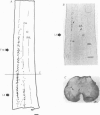Abstract
1. The segmental distribution of cell bodies of sympathetic preganglionic neurones projecting into the left lumbar sympathetic chain beyond the L4 ganglion was determined in rats using retrograde transport of horseradish peroxidase. Labelled perikarya were found mainly in segments T13-L2 in the ipsilateral intermediolateral cell column. 2. Neurophysiological studies were conducted on this cell population in anaesthetized, vagotomized and artificially ventilated rats. 3. One hundred and thirty sympathetic preganglionic neurones were studied in spinal segments T13-L2, inclusive, after their antidromic identification following electrical stimulation of the left lumbar sympathetic chain between the 4th and 5th lumbar ganglia; sixty-six had on-going activity and thirty of the remainder were activated by the ionophoretic application of glutamate. Their axonal conduction velocities were 0.5-12.5 m/s which is in the B and C fibre range. 4. The discharge patterns of these sympathetic preganglionic neurones were analysed in relation to phrenic nerve discharge. Of forty-eight neurones analysed in this manner five had peak firing during inspiration (inspiratory related), five during early expiration (post-inspiratory related), four during expiration (expiratory related) with the remainder having a firing pattern unrelated to phrenic nerve discharge (non-modulated). 5. The ECG-related patterns of discharge of the same forty-eight neurones were analysed. Twenty-one had an ECG-related pattern of discharge. Glutamate-activated quiescent neurones and those with on-going activity had a similar incidence of such modulation. Sympathetic preganglionic neurones with each type of respiratory modulation were found to have an ECG-related firing pattern. 6. The patterns of discharge of these neurones have been compared to those recorded, in previous studies, from sympathetic preganglionic neurones located at T2 which had axons projecting into the cervical sympathetic nerve and 'sympathoexcitatory' neurones of the rostral ventrolateral medulla. There appear to be some differences in the respiratory modulations of baroreceptor-sensitive neurones found within each of the three populations. Consequently, it is suggested that supraspinal pathways, other than those arising in the rostral ventrolateral medulla, may be important in influencing the activity of baroreceptor-sensitive sympathetic preganglionic neurones.
Full text
PDF
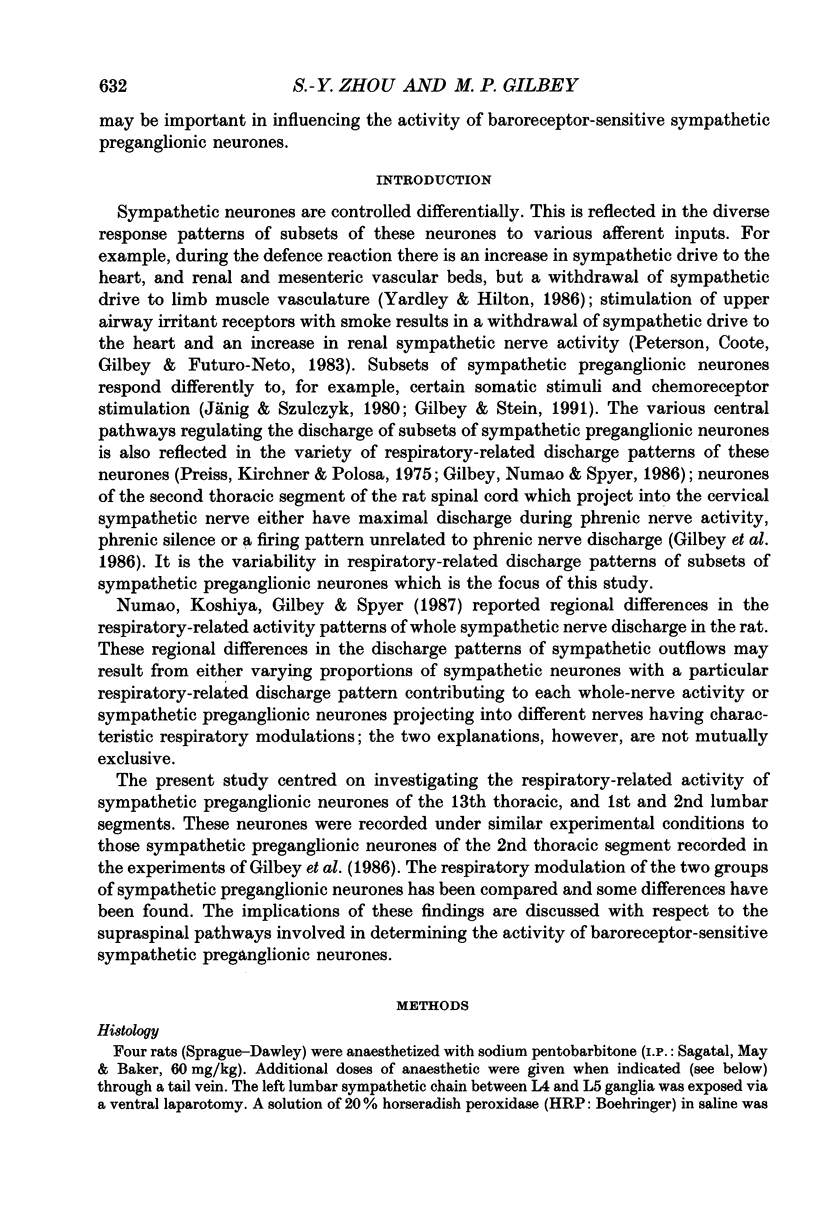
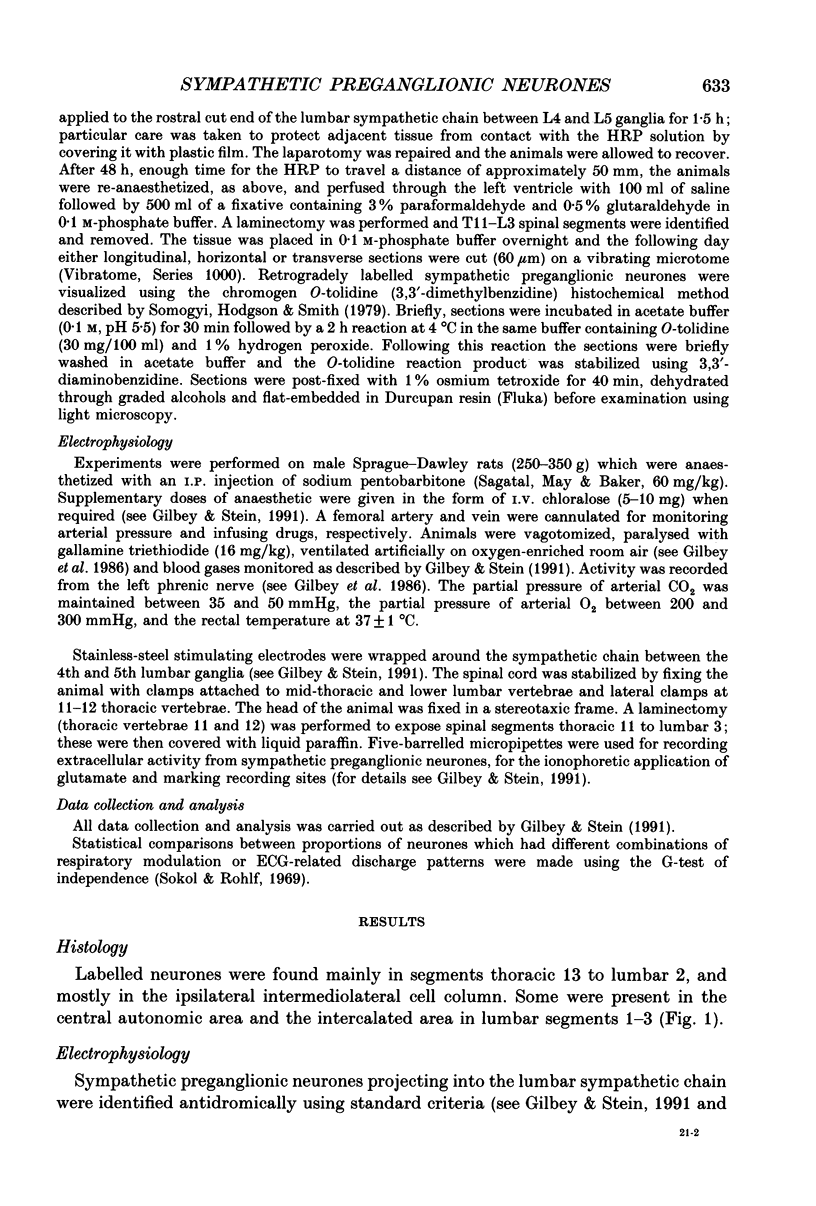
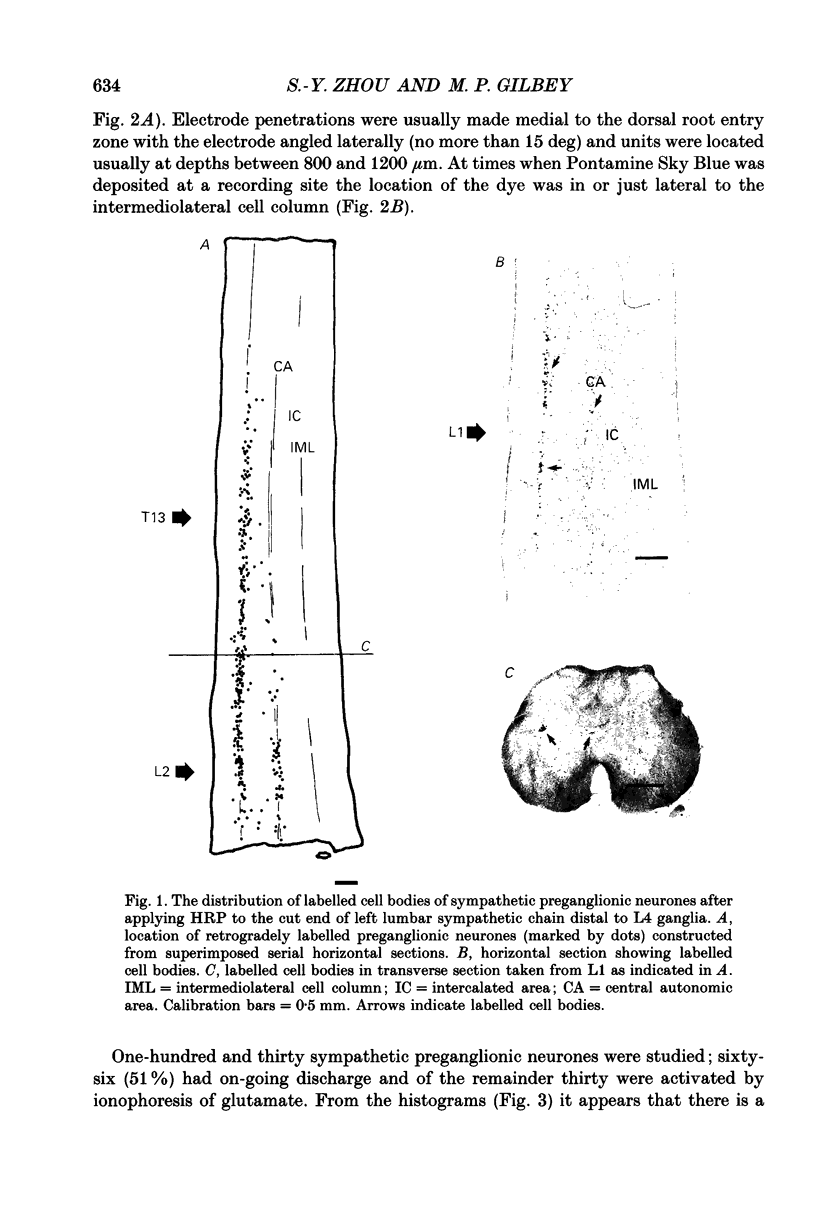


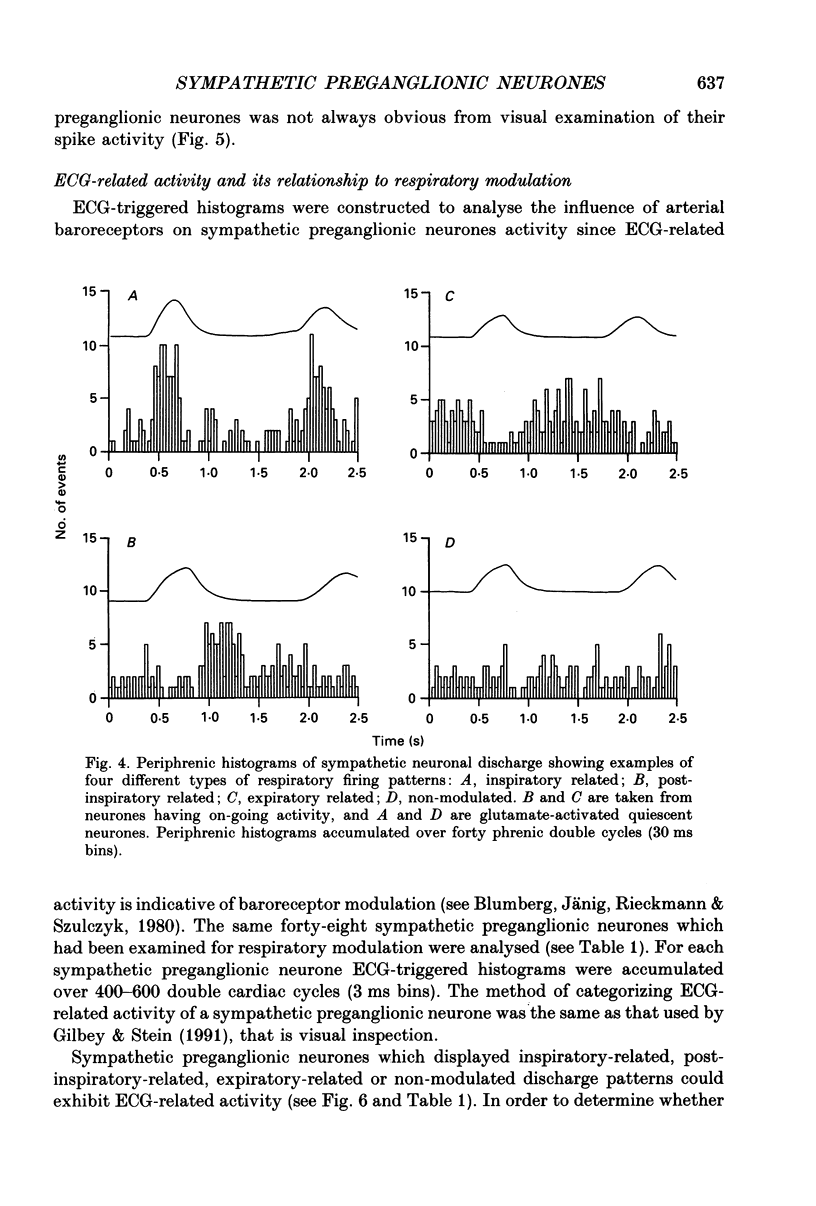

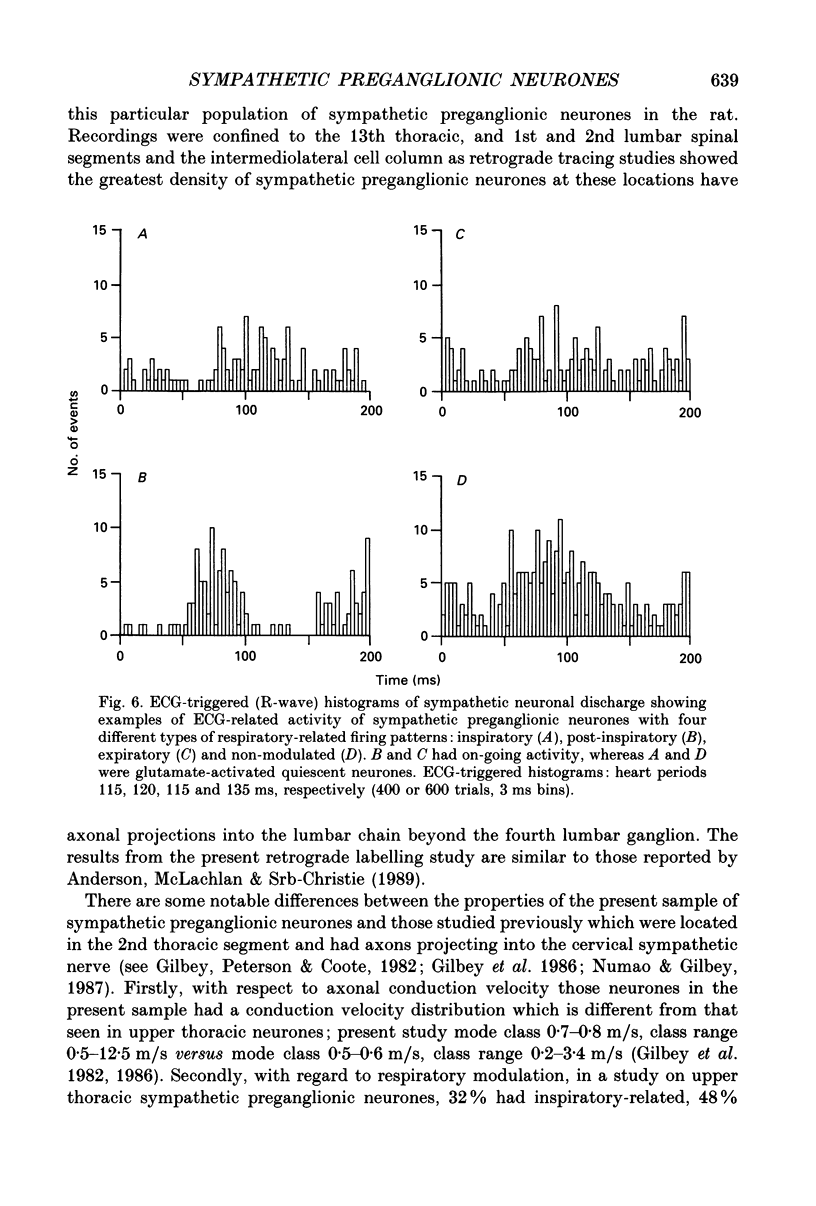

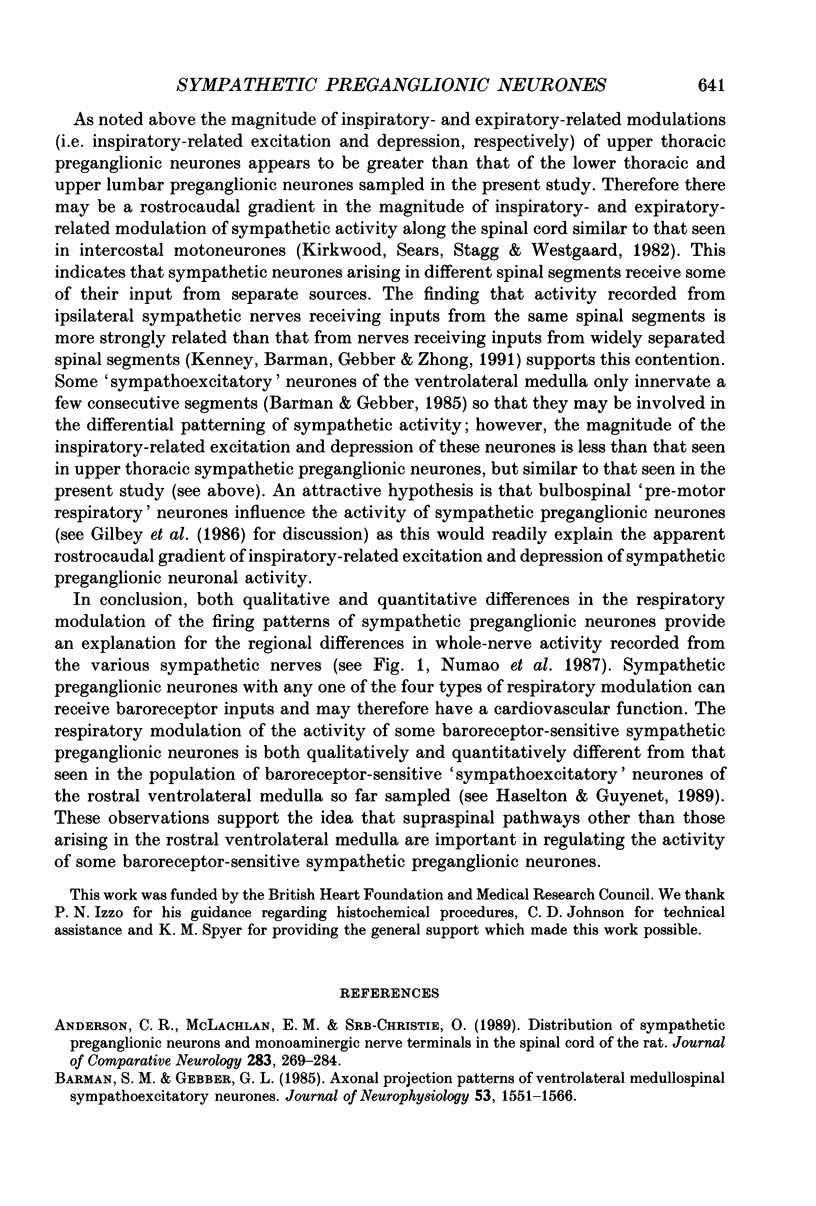
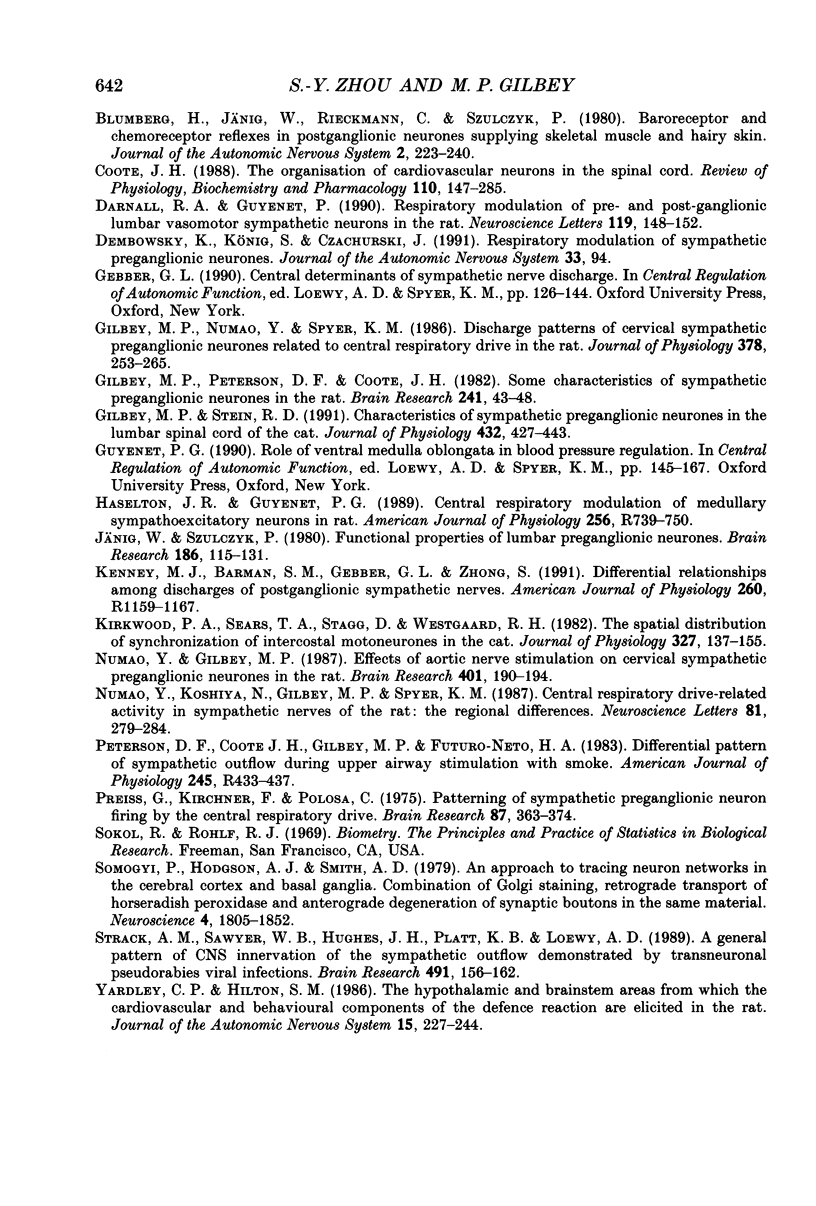
Images in this article
Selected References
These references are in PubMed. This may not be the complete list of references from this article.
- Anderson C. R., McLachlan E. M., Srb-Christie O. Distribution of sympathetic preganglionic neurons and monoaminergic nerve terminals in the spinal cord of the rat. J Comp Neurol. 1989 May 8;283(2):269–284. doi: 10.1002/cne.902830208. [DOI] [PubMed] [Google Scholar]
- Barman S. M., Gebber G. L. Axonal projection patterns of ventrolateral medullospinal sympathoexcitatory neurons. J Neurophysiol. 1985 Jun;53(6):1551–1566. doi: 10.1152/jn.1985.53.6.1551. [DOI] [PubMed] [Google Scholar]
- Blumberg H., Jänig W., Rieckmann C., Szulczyk P. Baroreceptor and chemoreceptor reflexes in postganglionic neurones supplying skeletal muscle and hairy skin. J Auton Nerv Syst. 1980 Oct;2(3):223–240. doi: 10.1016/0165-1838(80)90013-2. [DOI] [PubMed] [Google Scholar]
- Coote J. H. The organisation of cardiovascular neurons in the spinal cord. Rev Physiol Biochem Pharmacol. 1988;110:147–285. doi: 10.1007/BFb0027531. [DOI] [PubMed] [Google Scholar]
- Darnall R. A., Guyenet P. Respiratory modulation of pre- and postganglionic lumbar vasomotor sympathetic neurons in the rat. Neurosci Lett. 1990 Nov 13;119(2):148–152. doi: 10.1016/0304-3940(90)90820-y. [DOI] [PubMed] [Google Scholar]
- Gilbey M. P., Numao Y., Spyer K. M. Discharge patterns of cervical sympathetic preganglionic neurones related to central respiratory drive in the rat. J Physiol. 1986 Sep;378:253–265. doi: 10.1113/jphysiol.1986.sp016218. [DOI] [PMC free article] [PubMed] [Google Scholar]
- Gilbey M. P., Peterson D. F., Coote J. H. Some characteristics of sympathetic preganglionic neurones in the rat. Brain Res. 1982 Jun 3;241(1):43–48. doi: 10.1016/0006-8993(82)91226-4. [DOI] [PubMed] [Google Scholar]
- Gilbey M. P., Stein R. D. Characteristics of sympathetic preganglionic neurones in the lumbar spinal cord of the cat. J Physiol. 1991 Jan;432:427–443. doi: 10.1113/jphysiol.1991.sp018392. [DOI] [PMC free article] [PubMed] [Google Scholar]
- Haselton J. R., Guyenet P. G. Central respiratory modulation of medullary sympathoexcitatory neurons in rat. Am J Physiol. 1989 Mar;256(3 Pt 2):R739–R750. doi: 10.1152/ajpregu.1989.256.3.R739. [DOI] [PubMed] [Google Scholar]
- Jänig W., Szulczyk P. Functional properties of lumbar preganglionic neurones. Brain Res. 1980 Mar 17;186(1):115–131. doi: 10.1016/0006-8993(80)90259-0. [DOI] [PubMed] [Google Scholar]
- Kirkwood P. A., Sears T. A., Stagg D., Westgaard R. H. The spatial distribution of synchronization of intercostal motoneurones in the cat. J Physiol. 1982 Jun;327:137–155. doi: 10.1113/jphysiol.1982.sp014224. [DOI] [PMC free article] [PubMed] [Google Scholar]
- Numao Y., Gilbey M. P. Effects of aortic nerve stimulation on cervical sympathetic preganglionic neurones in the rat. Brain Res. 1987 Jan 13;401(1):190–194. doi: 10.1016/0006-8993(87)91182-6. [DOI] [PubMed] [Google Scholar]
- Numao Y., Koshiya N., Gilbey M. P., Spyer K. M. Central respiratory drive-related activity in sympathetic nerves of the rat: the regional differences. Neurosci Lett. 1987 Oct 29;81(3):279–284. doi: 10.1016/0304-3940(87)90396-x. [DOI] [PubMed] [Google Scholar]
- Peterson D. F., Coote J. H., Gilbey M. P., Futuro-Neto H. A. Differential pattern of sympathetic outflow during upper airway stimulation with smoke. Am J Physiol. 1983 Sep;245(3):R433–R437. doi: 10.1152/ajpregu.1983.245.3.R433. [DOI] [PubMed] [Google Scholar]
- Preiss G., Kirchner F., Polosa C. Patterning of sympathetic preganglionic neuron firing by the central respiratory drive. Brain Res. 1975 Apr 11;87(2-3):363–374. doi: 10.1016/0006-8993(75)90434-5. [DOI] [PubMed] [Google Scholar]
- Somogyi P., Hodgson A. J., Smith A. D. An approach to tracing neuron networks in the cerebral cortex and basal ganglia. Combination of Golgi staining, retrograde transport of horseradish peroxidase and anterograde degeneration of synaptic boutons in the same material. Neuroscience. 1979;4(12):1805–1852. doi: 10.1016/0306-4522(79)90059-9. [DOI] [PubMed] [Google Scholar]
- Strack A. M., Sawyer W. B., Hughes J. H., Platt K. B., Loewy A. D. A general pattern of CNS innervation of the sympathetic outflow demonstrated by transneuronal pseudorabies viral infections. Brain Res. 1989 Jul 3;491(1):156–162. doi: 10.1016/0006-8993(89)90098-x. [DOI] [PubMed] [Google Scholar]
- Yardley C. P., Hilton S. M. The hypothalamic and brainstem areas from which the cardiovascular and behavioural components of the defence reaction are elicited in the rat. J Auton Nerv Syst. 1986 Mar;15(3):227–244. doi: 10.1016/0165-1838(86)90066-4. [DOI] [PubMed] [Google Scholar]



